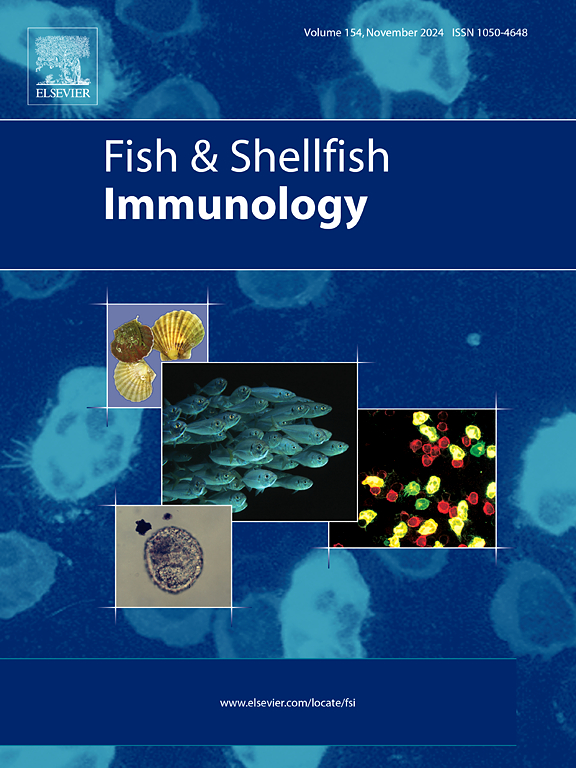Impacts of live and artificial feed on histology, biochemical indicators, gene expression, and bacterial resistance in mandarin fish (Siniperca chuatsi)
IF 4.1
2区 农林科学
Q1 FISHERIES
引用次数: 0
Abstract
The mandarin fish (Siniperca chuatsi) is a significant freshwater carnivorous species in Chinese aquaculture industry, and its farming scale is continuously expanding. The use of feed in aquaculture has become an increasingly common practice. However, the impacts of substituting artificial feed for live bait on fish's biochemical and immune responses are poorly understood. In this study, two hundred forty mandarin fish (weight: 5.60 ± 0.41 g) were divided into two groups and fed live bait or artificial feed (LB and AF groups) over a 63-day aquaculture experiment. We compared the differences between the two groups in terms of histology, biochemical indicators, gene expression, and bacterial resistance. The results showed that artificial feed promoted enhanced growth, evidenced by higher weight (p < 0.05). The AF group exhibited higher liver and intestinal somatic indices (p < 0.05), and histological examination revealed denser cytoplasmic content in liver cells, less fragmentation of renal tubular epithelial cells, and less detachment of intestinal epithelial cells in the AF group. Regarding biochemical indicators and gene expression, the AF group showed better performance in glucose regulation and lipid metabolism. The AF group maintained glucose balance (p < 0.05) and effectively regulated cholesterol transport (p < 0.05), promoting lipolysis (p < 0.05) while inhibiting lipogenesis (p < 0.05). In contrast, live bait consumption resulted in reduced lipolysis (p < 0.05), increased lipogenesis (p < 0.05), impaired endoplasmic reticulum function (p < 0.05), heightened inflammation (p < 0.05), and diminished antioxidant capacity (p < 0.05). Additionally, the LB group exhibited lower survival rates and lysozyme levels during bacterial challenges. Overall, artificial feed was more beneficial for the growth, regulate physiology and enhance disease resistance of S. chuatsi, highlighting its potential to improve fish health and increase aquaculture yield.

求助全文
约1分钟内获得全文
求助全文
来源期刊

Fish & shellfish immunology
农林科学-海洋与淡水生物学
CiteScore
7.50
自引率
19.10%
发文量
750
审稿时长
68 days
期刊介绍:
Fish and Shellfish Immunology rapidly publishes high-quality, peer-refereed contributions in the expanding fields of fish and shellfish immunology. It presents studies on the basic mechanisms of both the specific and non-specific defense systems, the cells, tissues, and humoral factors involved, their dependence on environmental and intrinsic factors, response to pathogens, response to vaccination, and applied studies on the development of specific vaccines for use in the aquaculture industry.
 求助内容:
求助内容: 应助结果提醒方式:
应助结果提醒方式:


